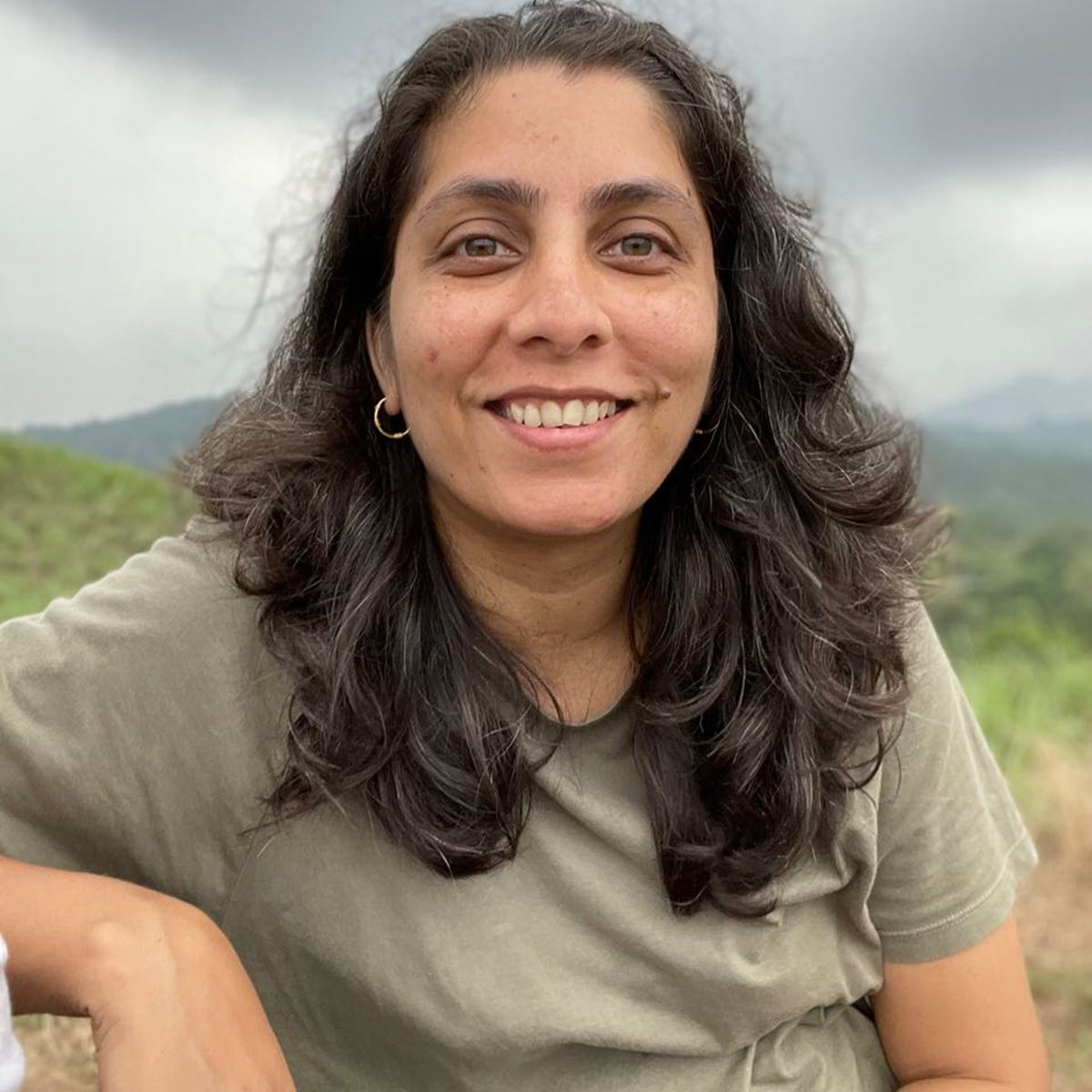Elizeth van der Vorst has been a Brazilian tea importer since 1994. Her company, Amigos do Chá, embodies her love of tea and its power to bring people together. Elizeth has been our friend at Tea Journey for several years. Among other things, she feels a deep love for India, particularly Darjeeling. In 2022, Elizeth and her husband Gerard made their maiden trip to India, one that was years in planning. She has returned yearly and plans to lead a tour group from Brazil, South America, and Europe to India in 2025. Here, Elizeth speaks about her love for India and why she can’t wait to bring tea lovers here.
Listen to the interview
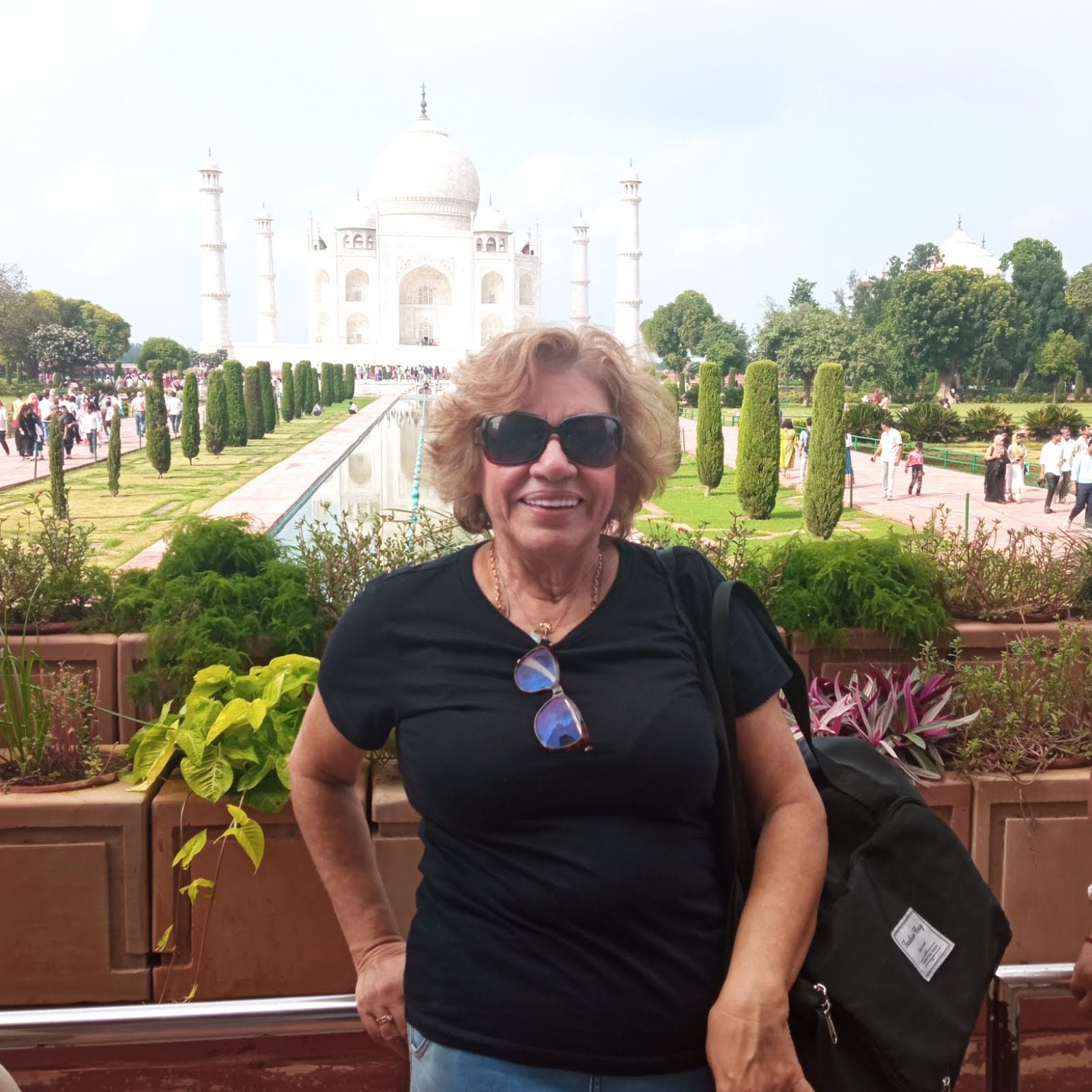
Aravinda: In your work in tea how did the love for India develop? Was it the tea or was it more than that?
Elizeth: My journey with tea truly began when I moved to the Netherlands in 1990. There, my husband, who is Dutch, introduced me to the world of tea, and my very first experience was with none other than Darjeeling tea. It was a staple on his shelf and available in every tea shop we visited. The name “Darjeeling” was completely unfamiliar to me, once in Brazil I did not taste it ever in my life. For my generation, “tea” mostly meant herbal infusions made by our grandmothers or mothers, like mint, chamomile, or fennel—regional herbs. My curiosity drove me to understand why the Dutch were so fond of tea. At that time, offering tea was the first gesture of hospitality when you entered a home or office. It was always a choice between Darjeeling, Assam, English Breakfast, or Earl Grey. This warm gesture left a lasting impression on me, and Darjeeling, being my first experience, became my favorite. It inspired me to create my own tea import business when I returned to Brazil.
India became a part of my thoughts, not only because it is the producer of Darjeeling but also because I had the chance to meet my first tea supplier in the Netherlands, Jaap de Groot, who had a deep connection with India. He visited the country frequently and shared his stories, painting an image of India that seemed unreachable to me at that time. I knew I needed to establish my business before I could fulfill my dream of visiting. Many challenges on this journey meant that I had to focus on building my mission to promote tea culture in Brazil.
Over these decades that you have been working in tea, what has kept your interest in it?
That’s a great question! After 30 years, I simply cannot imagine my life without tea. I find it impossible to separate tea from my business, or myself from tea. I have always been driven to embrace new challenges, and with a lot of resilience and hard work, I pushed forward. In the early 90s, working with tea as a business was almost unheard of in Brazil. There was little culture around tea, blends, or infusions, and specialized stores were few, mainly in major cities like São Paulo. Despite this, I chose tea and committed deeply to it. Back then, we didn’t have the technology we have today, but I was working very hard with hope that tea would be something for the future.
There were highs and lows, but I always held onto the vision that what I had seen in Europe would eventually reach Brazil. Slowly, it did, and this gave me even more motivation to keep going. I saw clients’ businesses thrive with tea, more articles began to emerge, and tea specialists and sommeliers became more common. I realized I needed to keep learning. My passion for tea turned into a deep love because, while passion can fade after a few setbacks, love endures, helping you push through to reach your goals. Slow and steady has been my approach, and that has been my interest all along.
Why did you name your business ‘Amigos do Chá’?
After facing various economic crises and returning to the Netherlands, I decided that once I got back to Brazil, I would continue my tea business. I needed a name that truly reflected my journey with tea. Along the way, I met so many people who inspired and motivated me to continue promoting tea culture through my company. I had so many friends—friends of tea. My first experience with tea was through my husband, my friend. Friends from the Netherlands would always bring me newspapers and articles about tea to help me learn more. Over the years, I collected a network of friends linked, in one way or another, to tea and the tea business. Technology later allowed me to connect with even more friends, including you, my first Indian friend, and others like Peter Keen, Dan Bolton, and Shabnam Weber. They are all friends of tea, and that brings me immense joy. So, ‘Amigos do Chá’ was a natural choice—a gathering of friends united by tea.
Aravinda: How did you plan your India trip? How was it? What made you come back not once but three times?
This is my favorite topic these days! I visited India in 2022, 2023, and 2024. As I mentioned earlier, I have always dreamed of visiting India, but I have dedicated myself to work, clients, and family. From time to time, we thought about traveling to Asia to make that dream a reality, but there was always something else—Europe was often the primary goal because of my suppliers in Germany. I planned to go in 2019, but the pandemic delayed everything. Finally, in 2022, I made it to India.
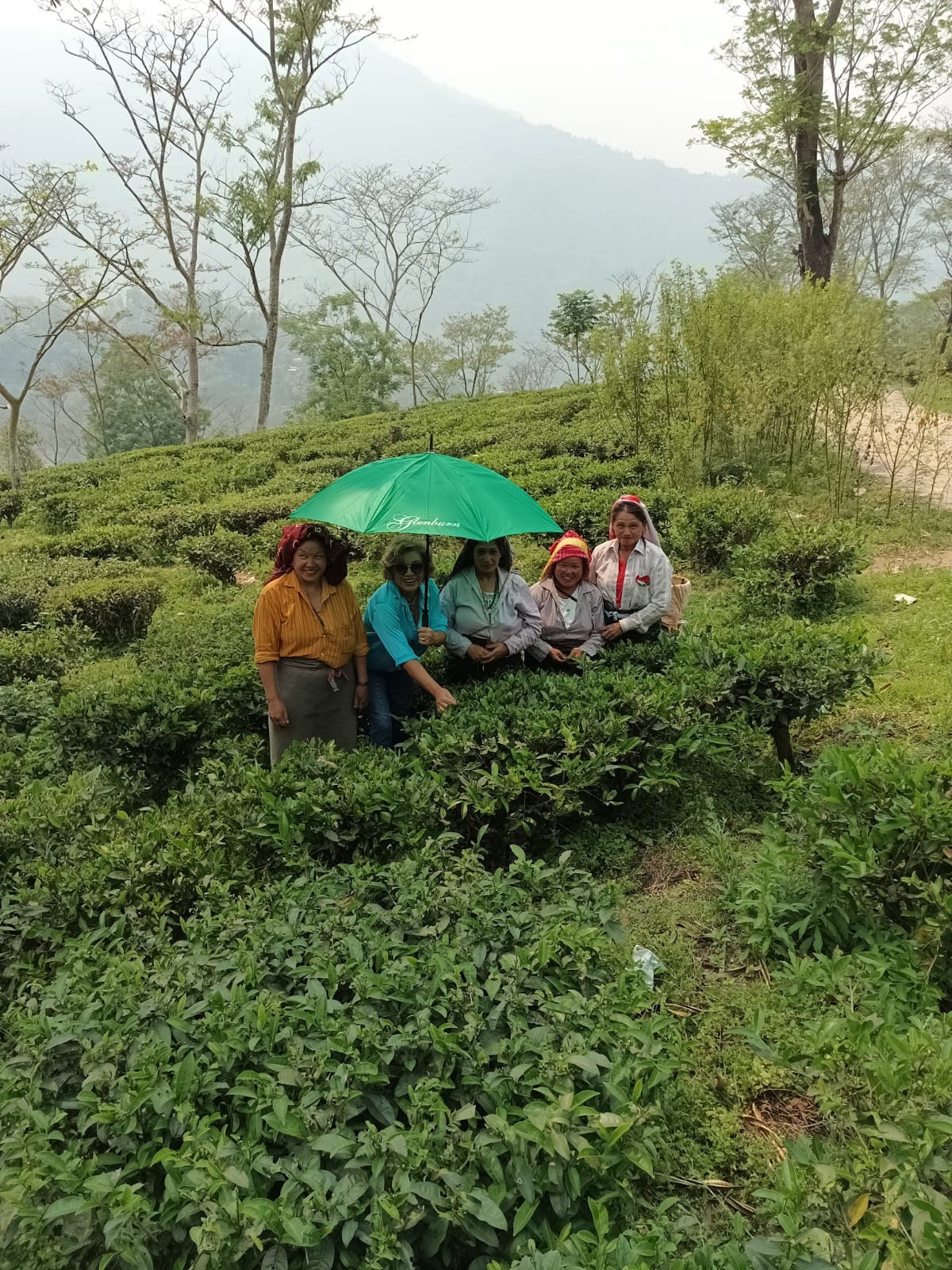
Darjeeling was my first stop, and you were an invaluable part of my journey, providing tips, while Mr. Raju Lama helped me navigate my way there. I arrived in Bagdogra on September 30th, during the Durga Puja festivities, a time when India is at its most vibrant. As we traveled from Siliguri to Darjeeling, my heart raced with excitement as I saw tea gardens for the first time. I made several stops just to chat with the tea pluckers. I was overjoyed—they were my inspiration. With every ascent up the Himalayas, my enthusiasm grew, and it felt as if I was floating on clouds.
After visiting a local tea farmer, we continued our journey. As dusk approached, I kept asking, “Are we close to Darjeeling?” And then, Mr. Raju Lama pointed out the lights in the distance and said, “See those tiny lights? That’s Darjeeling.” I couldn’t help but burst into tears—intense, overwhelming emotions that still bring tears to my eyes as I remember. Darjeeling has always felt like home to me. I felt like I was an old resident, returning. Seeing Mount Kanchenjunga at sunrise was a spiritual experience, with its grandeur overlooking the tea gardens. Glenburn was my paradise, thanks to Mrs. Husna Prakash’s invitation. Everything was divinely orchestrated.
From then on, Darjeeling and India became etched in my heart. My initial three-month stay turned into five months, and this year, I returned for another month and a half. Why? Well, tea brought me to Darjeeling, India, and Kolkata, where I formed partnerships and friendships. But the greatest reason is that India offers so much in every aspect—culturally, emotionally, technologically, philosophically, and the positive energy that emanates from the people. I am rejuvenated every time I visit India. Gerard and I are now ambassadors for the beauty of India, a side that many do not see on YouTube.
Where did you visit in India? How was the tea?
I traveled to several places in India, although there’s still much more I wish to explore. During my time there, we also visited seven other countries in Asia, but in India, I went to New Delhi, Agra, Siliguri, Dooars, Darjeeling, Kalimpong, Assam, and Meghalaya.
Being in India meant constantly thinking about tea, or “chai” when outside the Himalayas. In Kolkata, where I built strong connections, chai became a daily ritual—whether milk tea or masala chai, each recipe unique, with its own blend of spices like ginger, cardamom, and cinnamon. Assam tea is often used for chai, and I was able to savor it in so many different ways.
How did visiting India change your view of the tea itself?
Learning about tea, tasting it, and understanding the processes behind it is one thing. But witnessing it firsthand—seeing the intricate work that goes into every leaf, meeting the people who pour their heart and soul into it—changed everything for me. Visiting India gave me a deeper appreciation for the complexities and challenges of the tea industry. It’s not just about what’s in the cup; it’s about the lives, the stories, and the dedication that make each sip possible. Today, I see tea, mainly Darjeeling tea not just as a beverage, but as a symbol of resilience, hard work and tradition. Many of the plantation owners face political and social challenges to sustain their businesses, and sadly, some have failed to overcome these challenges and have had to give up. Others persist with great dedication, keeping the fame and tradition of Darjeeling tea alive, despite the growing competition from Nepalese teas and other challenges such as climate change.
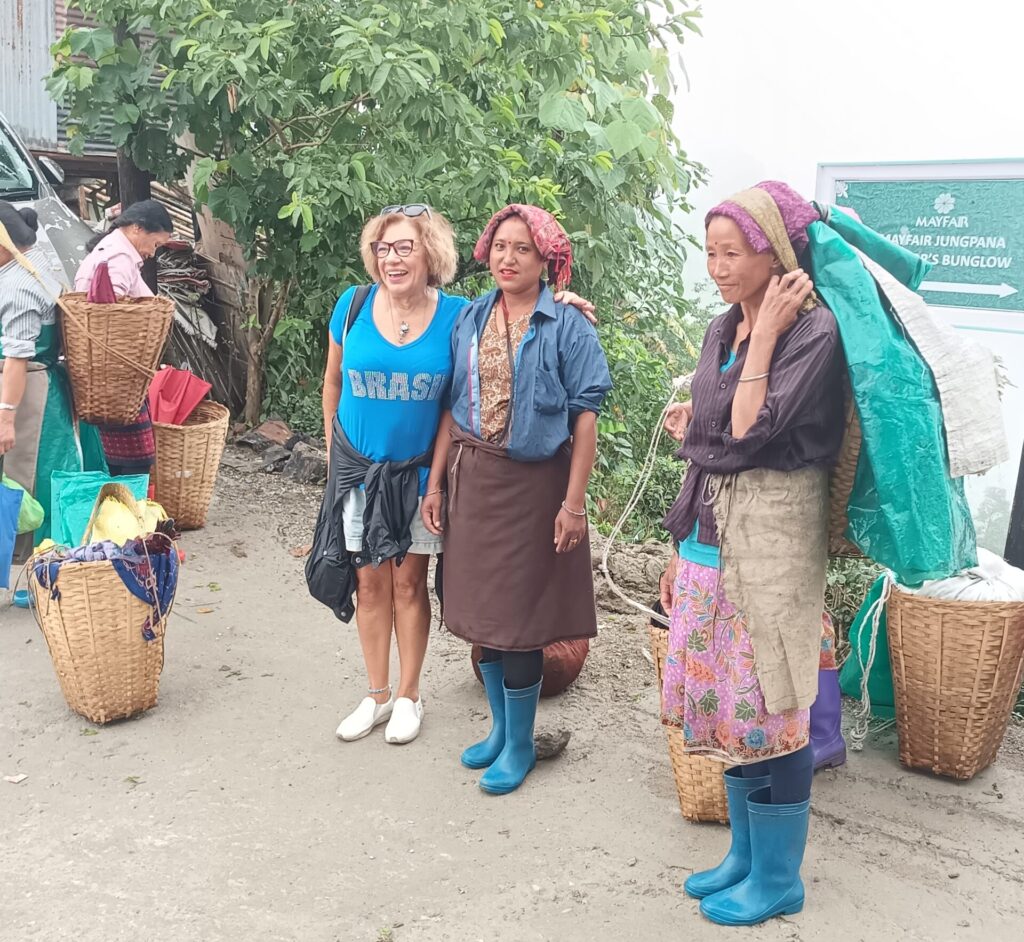
Amigos do Chá on tour
I have personally witnessed how weather conditions affect production. This year, for example, the rains delayed the harvest of the second flush, and this has a direct impact on the quality and quantity of the production. Climate change is also altering local biodiversity, and there are reports of Bengal tigers moving closer to communities due to deforestation and habitat changes, something I had read about in articles but which is now becoming more frequent.
All of these issues have made me realize that tea is more than just a beverage; it is a constant struggle against natural and social forces. Camellia sinensis is there, strong and resilient, offering its benefits and a multitude of flavors and aromas, but it is up to us, humans, to care for and preserve this tradition. India is the second largest producer of tea in the world, and as a tea lover, especially Indian tea, I feel a responsibility to help preserve this culture.
How easy or difficult is it to travel within India in your experience? How did you manage? Why did you decide to offer the tours?
Traveling within India can be both exciting and challenging, depending on your level of preparation and familiarity. For us, even though we are over 70 years old, our first trip to India was a thrilling adventure. At that time, I was exactly 70 years old, and we embraced the journey with a sense of excitement and openness. The only real challenge we faced was navigating the experience of arriving for the first time, which can be overwhelming.
The Indian airports and immigration process are quite different from what we’re used to in Brazil and Europe. For example, only passengers are allowed inside the airport, and the check-in process starts right at the entrance. There are strict security checks, and during our first visit, we had a bit of a complicated situation when our luggage got stuck in New Delhi airport due to two power banks that were left in our checked baggage. They were removed, and the luggage was sent on to Bagdogra the next day, but it was a tiring process.
Immigration can also be tiring, especially after the pandemic, with long queues and extra paperwork. However, once you have your visa, correct address, and contact number in India, the entry process is manageable. We’ve learned a lot from our first experience, and now we’ve even made friends with some of the people we met at the airport.
On subsequent trips, our journeys have been much smoother, mainly thanks to the connections we’ve made through the tea community. Last year, for example, with the help of our collaborator, Anthony, we rented an apartment that was fully equipped and surrounded by all the essentials for any emergency. This made our stay so much easier, and we still maintain those contacts today.
As for why I decided to offer the tours, it stems from my passion for tea and my desire to share this world with others. After traveling to the Himalayan regions, Assam, Meghalaya, and even Nepal, I’ve gained so much knowledge and built such valuable relationships. I realized that I couldn’t keep these experiences just for myself.
Many people I know in Brazil and Europe have expressed a desire to visit India but afraid, mainly due to the perceived challenges of traveling there. My dream of taking people to India started as a way to introduce them to my supplier and tea culture of Europe, but India was always the bigger challenge and, honestly, the more exciting one. I love challenges, and with the help of my wonderful partners, Glenburn and Vajra Journeys, I decided to turn this dream into reality.
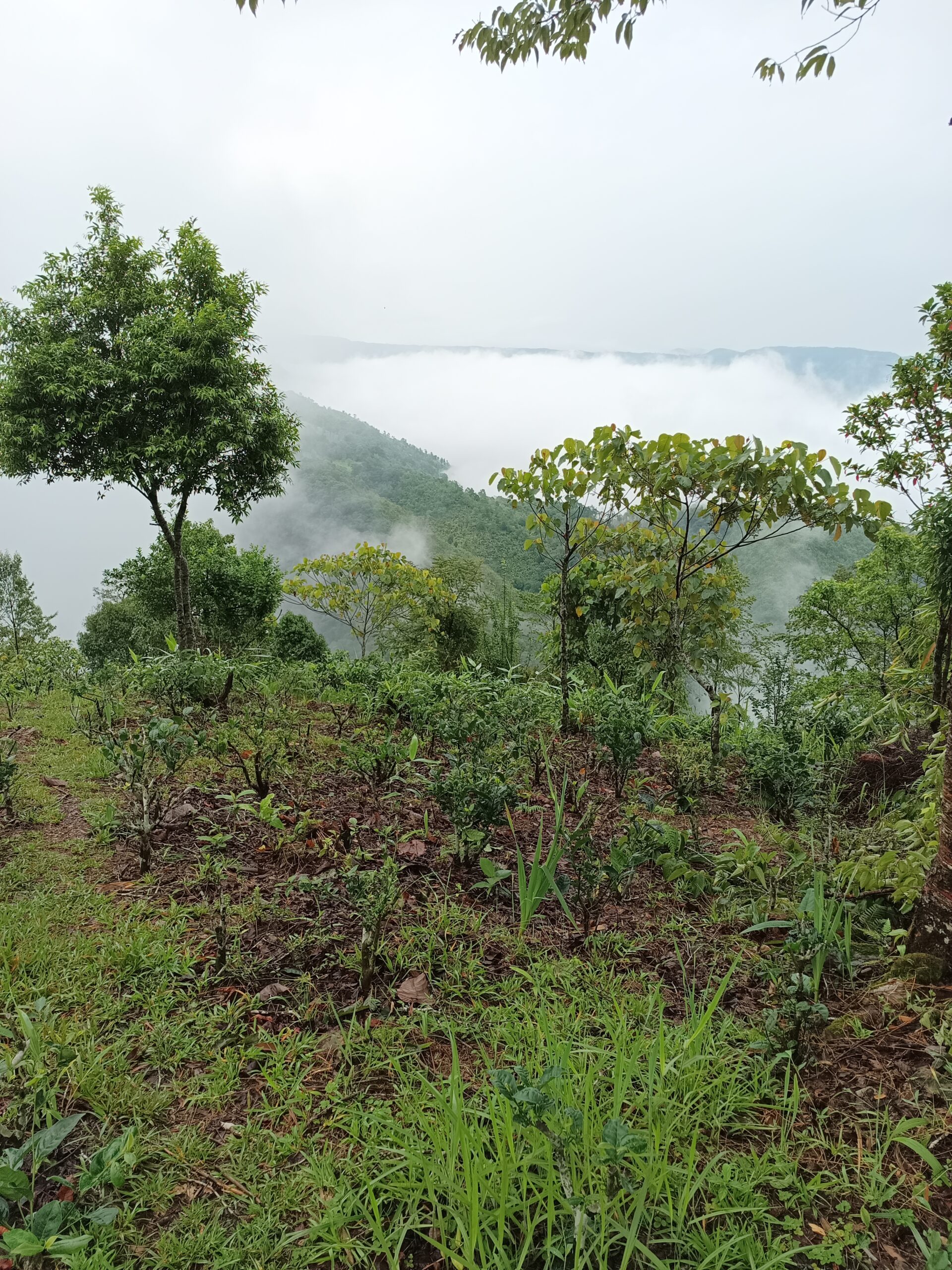
My goal is to invite both tea lovers and those who are new to the tea world to come and explore India. I’m certain that those unfamiliar with tea will fall in love, and those who already love it will deepen their appreciation, just as I have. We offer two well-organized tea tours, in collaboration with two respected companies that work with passion and integrity. Our first tour, in partnership with Glenburn, will take place in March and November 2025, and this will be an annual event. The tour with Vajra Journeys can be booked for March, April, or November 2025, and will also run annually.
Who can join the tour? What can they expect?
The tours we offer are designed for anyone with a passion for tea, culture, and adventure. They are open to tea enthusiasts, curious travelers, and anyone interested in exploring the authentic side of India. We collaborate with two well-established partners: Glenburn and Vajra Journeys, who help us organize these unique experiences.
Both tours aim to reveal the stories, processes, and people behind every cup of Indian tea. Participants can expect an immersive, educational, and heartfelt journey that goes beyond the surface of tourism. They will get to taste various teas, learn about the intricate processes of tea-making, and understand the rich history and culture that have shaped this industry. It’s not just a tour; it’s an experience that connects you with the heart of India’s tea heritage.
Elizeth’s tours are scheduled for 2025. For more details and the itinerary, do email her at [email protected] or reach her on Instagram

